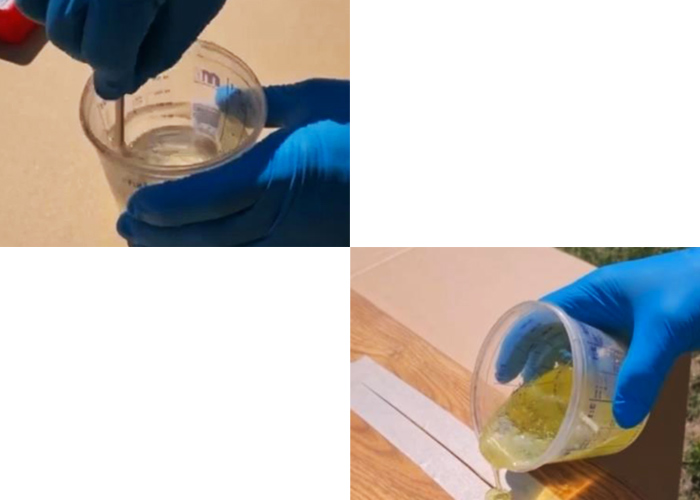Epoxy repair
Solid wood is a living material that changes even after processing. Small cracks in solid wood are natural and do not constitute grounds for complaint. They do not affect the stability and durability of your table in any way. Solid oak is characterised above all by its robustness and ease of care. If you follow the most important care instructions, your piece of furniture will shine like the day it was delivered, even after several decades. However, a very warm, dry room climate can favour changes such as hairline cracks, warping and dry cracks on your solid wood elements and furniture. In particular, underfloor heating, fireplaces and direct sunlight are factors that have an unfavourable effect on the natural material wood.
If cracks have appeared in your solid wood furniture, there is no need to worry. With the help of our epoxy repair kit, you can seal them yourself and thus restore the overall intact appearance of your solid wood product. Our repair kit is ideally suited for the permanent bonding of wood and has a high adhesive strength, is tough and hard and can be sanded.



